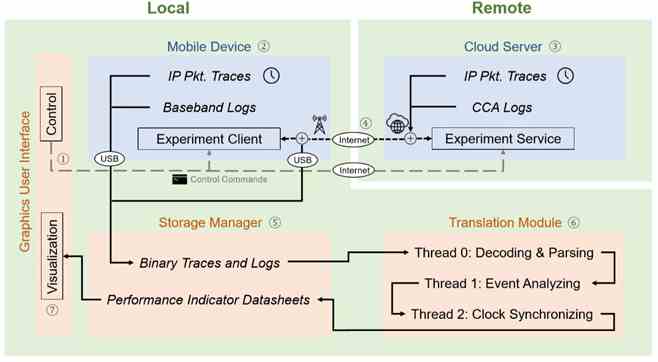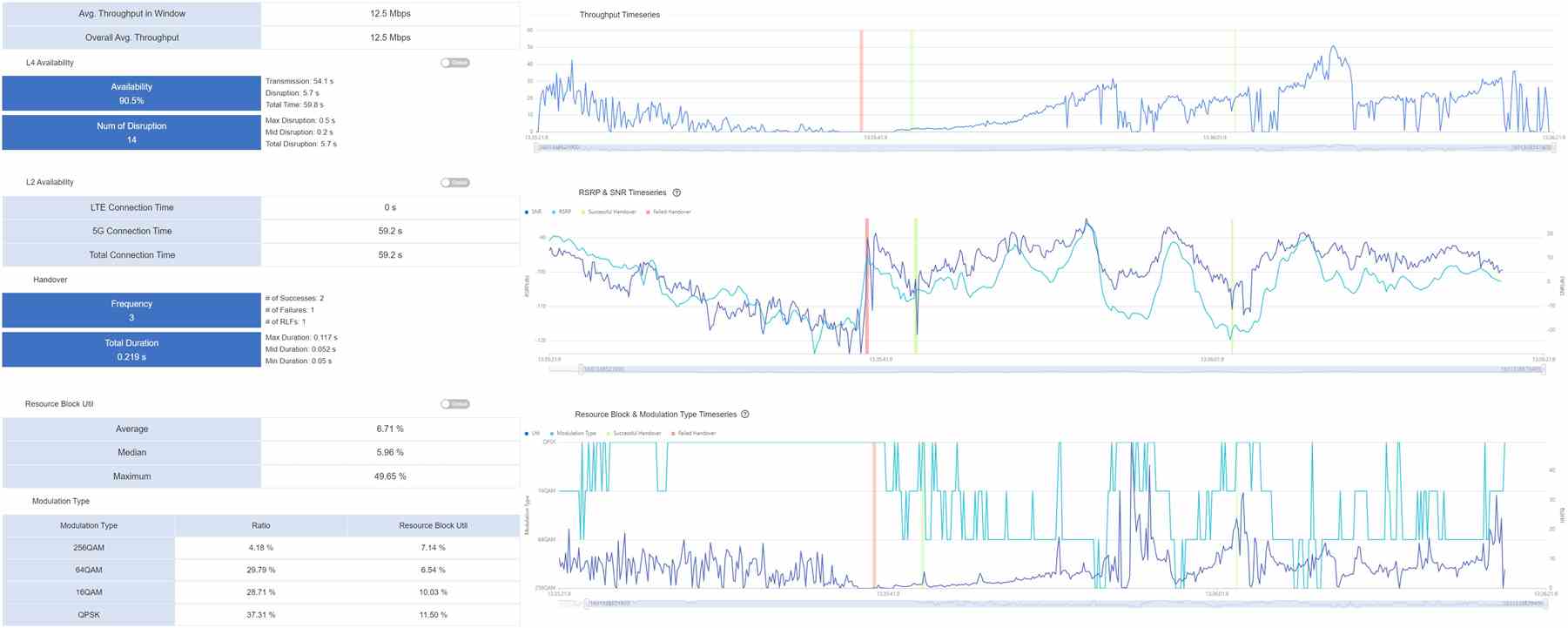A Graphical Diagnostics Tool for High-Speed Railway Internet Connectivity
已发布 05 十二月, 2023
As the high-speed railway network in China extends beyond 40,000 kilometers, maintaining seamless internet connectivity for passengers is becoming increasingly challenging. The demand for consistent and reliable online access is particularly crucial for travelers who spend extended hours on trains, relying on the expectation of undisturbed work, study, or entertainment. Addressing this need, a team of researchers from the School of Computer Science at Peking University developed ‘HiMoDiag’—an innovative tool designed to enhance the understanding and management of network performance in extremely high-mobility scenarios.
“HiMoDiag stands out as a TCP-LTE/5G cross-layer performance analysis tool that enables full-stack real-time comprehensive analysis and visualization of network performance from the application layer down to the physical layer,” explains Chenren Xu, corresponding author of the study. “It not only captures performance data across all layers of the network between the user application and service provider but also visualizes it in a way that's actionable for network operators.”
The team published their results in the KeAi journal High-speed Railway.
Notably, HiMoDiag is particularly useful in scenarios whereby passengers expect stable internet connectivity to support their work and leisure activities during travel. The tool’s real-time analysis and visualization capabilities allow for immediate network performance diagnosis and performance optimization—an aspect that traditional diagnostic tools tend to fall short of.
"By integrating cross-layer data analysis, we can now pinpoint and address issues much faster than before," Xu added. "This means less downtime for passengers and a more reliable service overall."
The design of HiMoDiag addresses several challenges, including clock synchronization across network layers and endpoints, managing the substantial data volume resulting from 5G's high bandwidth, and mitigating interference arising from performance indicator transmission.
Through its implementation and evaluation across an extensive dataset collected on trains with a maximum speed of 350 km/h, it has the potential to elevate network performance, thereby ensuring an enhanced user experience for passengers as well as the quality of mission-critical service provided by LTE-R or 5G-R. HiMoDiag’s experiment platform also allows for flexible control over mobile devices, facilitating various types of network experiments.


Contact author details: Chenren Xu, School of Computer Science, Peking University & Key Lab of High Confidence Software Technologies (Peking University), Ministry of Education, Beijing, China, chenren@pku.edu.cn
Founder: This work was supported by National Key Research and Development Plan, China (Grant No. 2020YFB1710900) and National Natural Science Foundation of China (Grant No. 62022005 and 62172008).
See the article: Ruihan Li, Yueyang Pan, Xiangtian Ma, Haotian Xu, Chenren Xu, TCP-LTE/5 G Cross-layer performance analysis tool for high mobility data networking and a case study on high-speed railway, High-speed Railway, 1(2) 2023, Pages 141-146.
https://doi.org/10.1016/j.hspr.2023.05.002